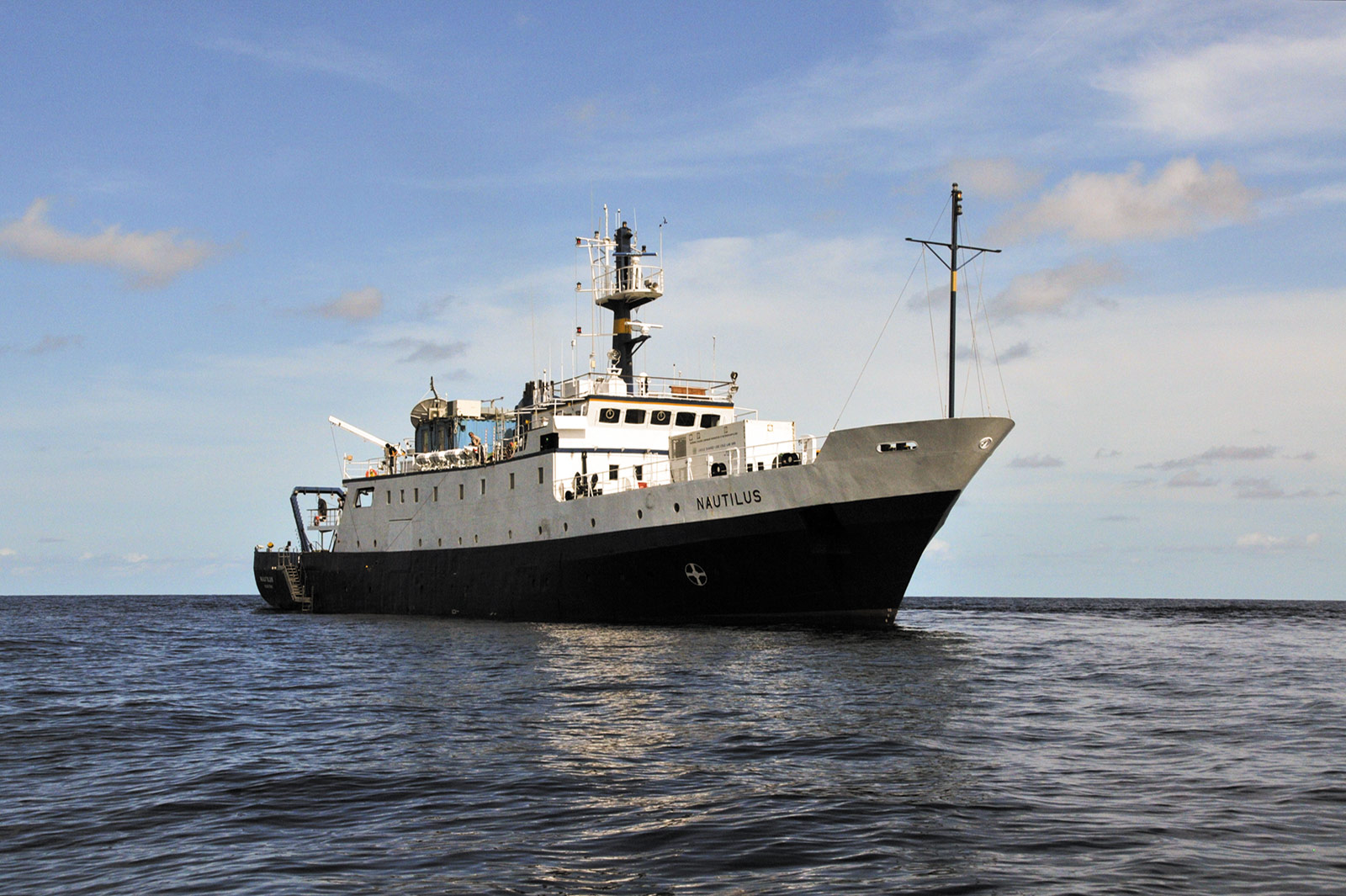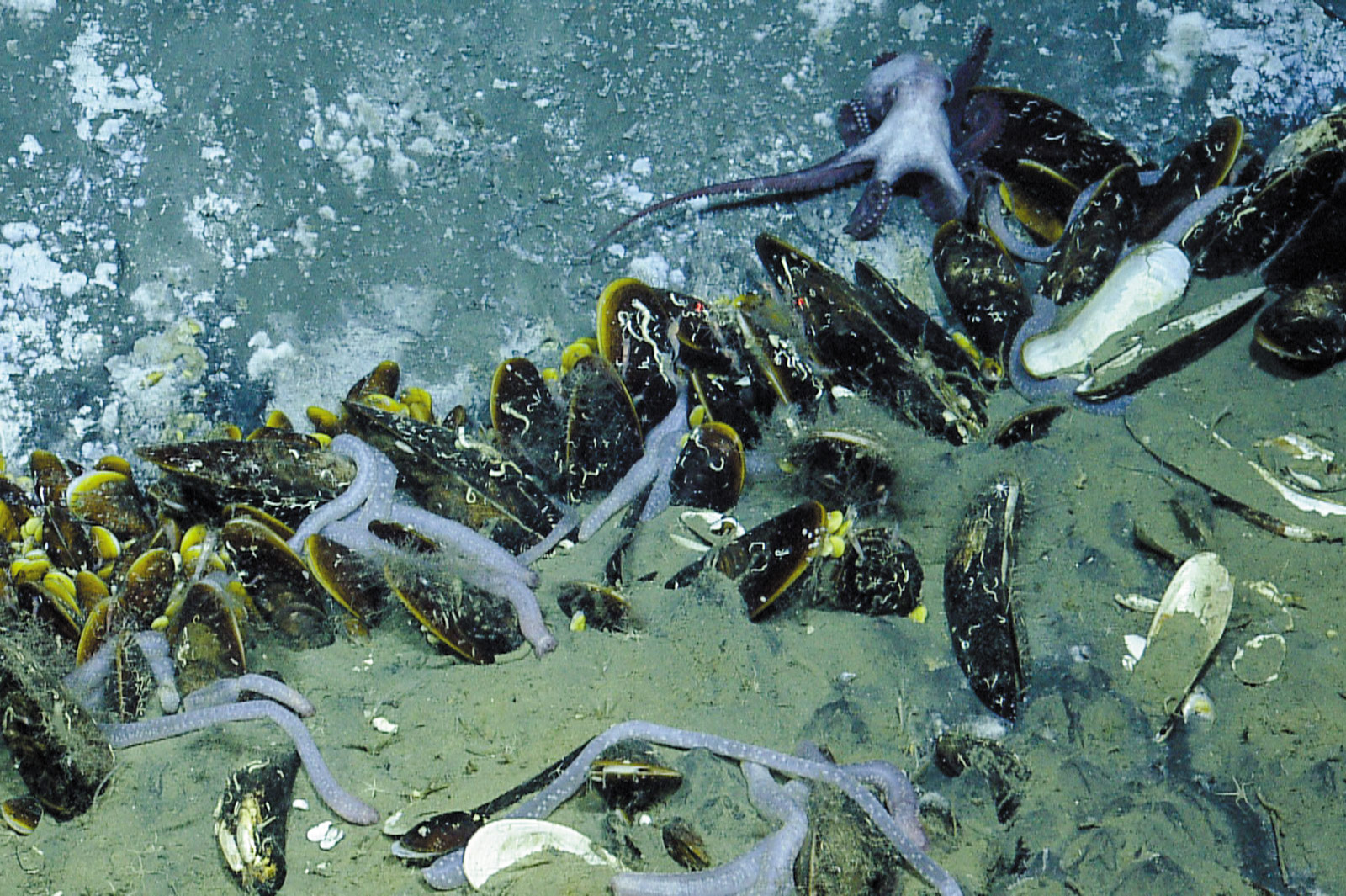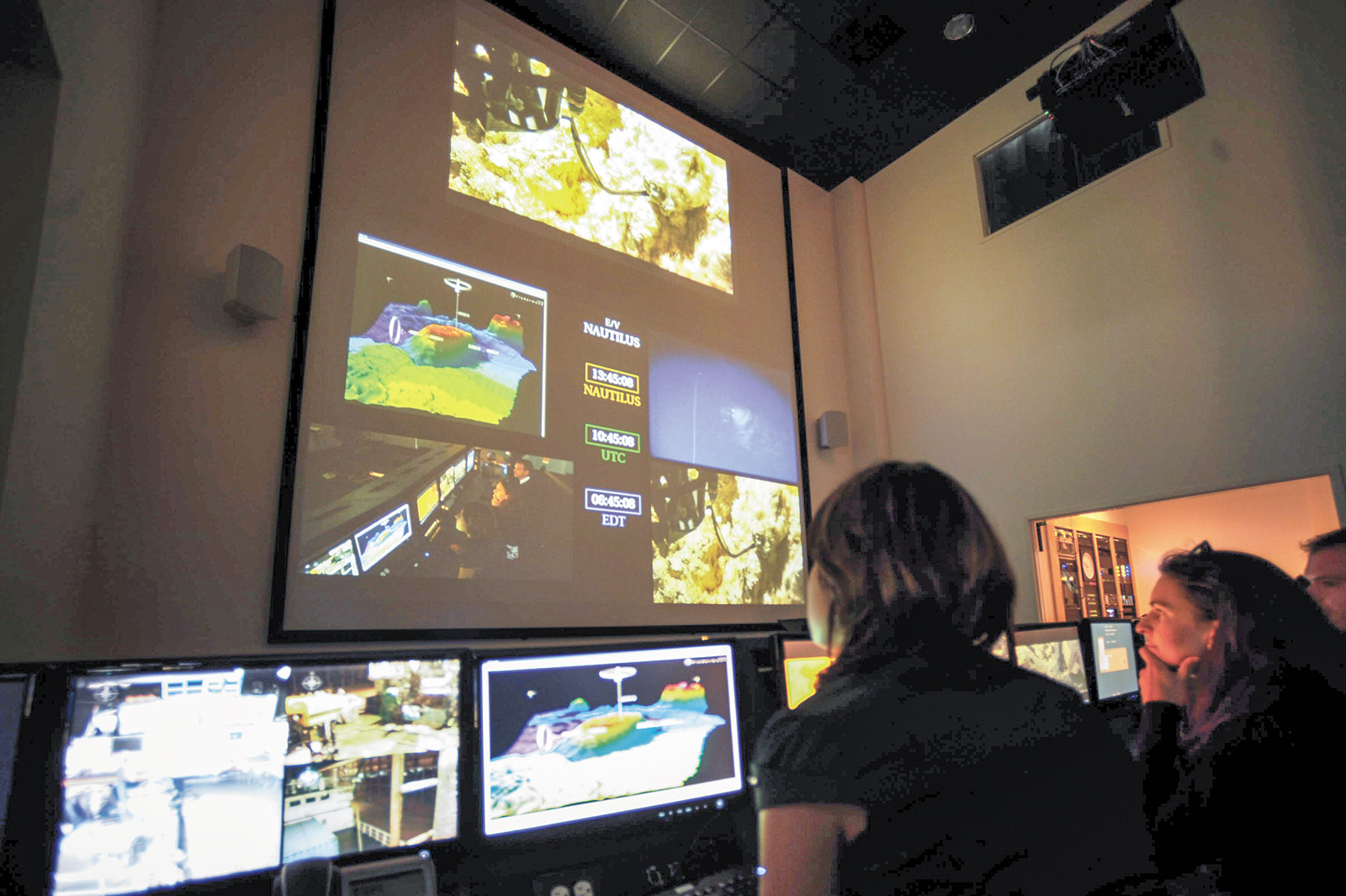Ocean Research Using Telepresence
Oceanographic research is undergoing a transformation—from a distance. While scientists still board a ship and navigate to locations around the globe to collect data, current research often relies on remotely operated vehicles (ROVs) to take scientists and explorers to the ocean floor virtually. What if ocean research went one step further? What if engineers operated the ROVs from the vessel but scientists conducted observations, analyzed data and made research decisions from shore? Thanks to a new project, scientists can test this scenario, and students can also conduct remote research.




Transforming Remotely Conducted Research through Ethnography, Education and Rapidly Evolving Technologies (TREET) is a collaboration between the Concord Consortium, Woods Hole Oceanographic Institution, the Harvard Kennedy School and the Ocean Exploration Trust to promote interdisciplinary research and education. Funded by the National Science Foundation, TREET combines expertise in ocean science, ethnography, education and technology to investigate how “telepresence” can transform STEM research and education, bringing research experiences to scientists and students who are unable to participate in data-gathering cruises because of the time commitment, expense, logistics or ship space, which is at a premium.
Telepresence refers to a suite of technologies that allows individuals to feel they are present at a location other than their own. Dr. Robert Ballard pioneered the first uses of oceanographic telepresence in the 1990s. Early experiments were often unidirectional—from ship to shore. Now, scientists and students can do more than simply wait at a distant location for data to arrive; they can actively direct what’s happening on the ship using voice and text commands.
Early career scientists and undergraduate students
Early career scientists familiar with the use of ROVs (robots tethered to a support ship by a cable carrying power and transmitting data) are working with a group of undergraduate students to conduct multidisciplinary (geochemical, geophysical and biological) investigations of the undersea phenomena at the Kick’em Jenny seamount, the adjacent cold seeps and the Barbados mud volcanoes. Eight students from the University of Idaho, Harvard University and Michigan State University began preparing for this research cruise with an online seminar series during the spring 2014 semester, with weekly topics led by participating scientists regarding the research sites and the tools onboard the ship and the ROV.
Students then developed their own research plans exploring changes over time in the topography, variations in biota in the extreme deep sea habitat, the correlation of currents to sediment and gas distribution from the seeps. Their research designs include the use of photomosaics, bathymetric data, water chemistry data, and video and photo images. During the fall 2014 cruise, students were able to participate in ship watches and analyze data that was streamed to shore via satellite—all without going to sea. Indeed, one of the goals of the TREET project is to bring the sea to the students.
At the beginning of the cruise, which traveled to the research sites in the Caribbean from September 25 to October 8, the group worked together at the Inner Space Center (ISC) at the University of Rhode Island to establish work practices and camaraderie comparable to that experienced at sea. The ISC is rigged with multiple large monitors and audiovisual equipment that the students and scientists used to communicate with the engineers aboard the E/V Nautilus to direct the ROV Hercules. From thousands of miles away, students watched the ROV dives, directing the measurements and sample collection, all in real time. Some of the students and professors then moved to a smaller command center at Woods Hole Oceanographic Institution to test a potential approach using multiple, distributed command centers. Following the cruise, students will continue their analysis and prepare a report of their results for presentation to the team and at professional conferences.
Ethnographic and educational research
TREET wants to understand what it takes to transform future research using remote human-robotic interactions. The ability to prepare for a remotely run deep sea cruise, including educating and training undergraduate students to fully engage in their own research is new. How can these mechanisms be leveraged to advance research experiences for scientists and students? What is it like to conduct research from remote locations? Are these students and scientists as invested in all phases of planning and conducting research, including the challenges of directing sample collection from shore? Ultimately our goal is to lay the groundwork for more people to explore sites from remote locations.
In addition to the ocean science research by scientists and students, TREET is undertaking ethnographic and educational research studies designed to explore transformative ways to conduct research remotely and to investigate whether ocean-based research could be considered a plausible focus for future undergraduate research experiences. Such research is known to benefit students in several ways: they gain an understanding of the research process and how scientists work; they develop data analysis skills and the ability to interpret results; and they are better at integrating theory and practice. Research in ocean science presents a unique challenge for students. Typically, ocean science research consists of two components: (1) the shipboard component for data and sample collection and (2) the land-based component for data and sample processing and analysis. Opportunities for undergraduate students to participate in scientific research by stepping onto a ship are extraordinarily limited. TREET is challenging this limitation. Can we excite and motivate students to consider ocean science and exploration while transforming the need to be aboard a research vessel?
The goals of our ethnographic research are to ascertain and represent the work flow of remote telepresence, including differences from ship-based science data collection; to provide insights into the cultural processes shaping domain-specific human-machine relationships that inform technological solutions from artificial intelligence and robotics; to help early career ocean scientists, some of whom are also mentoring undergraduates, elucidate effective approaches to using remote telepresence in their research; and to support the development of educational seminars for early career scientists and their students as they use remote telepresence to conduct their ocean research.
The future of ocean research points to smaller ships and fewer onboard opportunities for researchers—from undergraduate students to scientists. Can providing remote and open access to data to more land-bound scientists and students be an alternative? Thanks to telepresence, we may soon find out.
Amy Pallant (apallant@concord.org) directs the TREET education research.
Cynthia McIntyre (cmcintyre@concord.org) is director of communications.
This material is based upon work supported by the National Science Foundation under grant OCE-1344250. Any opinions, findings, and conclusions or recommendations expressed in this material are those of the author(s) and do not necessarily reflect the views of the National Science Foundation.

